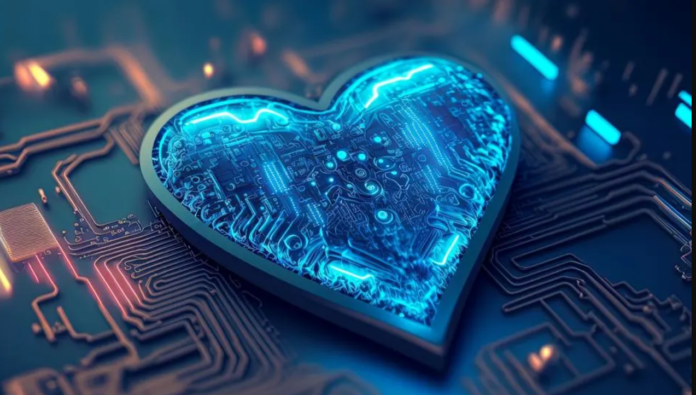According to the cultural anthropologist, Margaret Mead, one of the earliest signs of human civilization is evidence of a healed femur from a human who lived over 15,000 years ago. Not only did their tribe care enough about this person to tend to the wound, but they also had enough medical knowledge, as well as the tools, to treat it. Healthcare has come a long way from Paleolithic remedies, and the evolution of healthcare technology is a fascinating one. Here we look at how it started and where it’s going.
From X-rays to AI: A historical overview of healthcare technology
Archaeologists suggest that the first recorded medical device was a drill, tipped with flint, and used by a Neolithic dentist in Baluchistan 7,000 years ago. In Egyptian times amputees were fitted with prosthetic toes made from leather and wood, and the Greeks and Romans were skilled surgeons, utilizing bronze instruments.
The late 16th century saw the development of the compound microscope and in the early 18th century Daniel Gabriel Fahrenheit invented the ‘mercury-in-glass’ thermometer. Almost a hundred years later René Laennec developed the stethoscope, which enabled him to listen more modestly to women patients’ chests.
In the mid-nineteenth century both Charles Gabriel Pravaz and Alexander Wood developed the hypodermic syringe, and in 1895 Wilhelm Conrad Roentgen discovered X-rays.
During the early 20th century several life-changing developments took place with the invention of the electrocardiogram, the iron lung, the electron microscope and the first artificial kidney.
Post-war, developments such as the semiconductor, the fetal heart rate monitor, optical lasers, nuclear magnetic resonance imaging, CT scans, insulin pumps, artificial hearts and artificial pancreases improved the quality of people’s lives, extending their life spans and providing hope for millions.
The current landscape: Cutting-edge medical devices and digital health solutions
Fast forward to today and the evolution of healthcare technology has changed beyond the wildest imagination of the earliest medics.
We have:
- Remote monitoring – wearable tech can monitor patients’ heart rate or other vital signs
- AI – models can be programmed to perform routine screening, speeding up diagnosis and enhancing accuracy
- The Internet of Things – connects medical devices and patient information
- Augmented Reality – provides training and learning opportunities for medics
- Virtual Wards – patients can receive care in their own homes, improving outcomes and freeing up beds.
Let’s take a look at some of these examples of healthcare technology in more detail.
Harnessing the Power of Big Data: Transforming Healthcare Through Analytics
The COVID-19 pandemic and subsequent lockdowns made change imperative in order to ‘build back better’. Big Data is one of the ways in which healthcare professionals are collaborating and making better, more informed decisions about patient care. By using accumulated data to provide insights about individuals’ health, populations’ requirements and risks, and how medical institutions are performing, analysts are able to allocate resources more efficiently and improve outcomes.
Telemedicine: Redefining Access to Healthcare Services
Telemedicine, or remote clinical services, has gained in popularity over recent years, thanks to technology which allows virtual appointments and healthcare, both on a one-to-one basis and in a group setting. Patients save money on travel and childcare expenses, can choose appointments at a time that’s convenient for them, and receive individualized support. Healthcare providers save money, are able to offer flexible appointments and can remotely monitor chronic health conditions to ensure continuity.
Artificial Intelligence in Medicine: Revolutionising Diagnostics and Treatment
AI is increasing use within a healthcare setting and there are few areas in which it’s not currently being used. From recording medical notes, to the diagnostic interpretation of images, from predicting new drug targets against viruses, to AI-enabled hospitals, AI is increasingly being used to reduce the time routine tasks take and, therefore, increase the speed at which patients can be treated.
What Lies Ahead: Exploring the Future of Healthcare Technology
The future of healthcare technology is limited only by the human imagination. Experts predict that innovations such as brain implants, artificial organs, new drug developments, e-health apps, and synthetic DNA production, to mention just a few, will all impact positively on the health and wellbeing of the world’s aging population and increase both the length and the quality of people around the globe.
In conclusion
From the earliest tools and techniques to what would have been considered science fiction only decades ago, healthcare technology has advanced remarkably in recent years. Where the future of healthcare technology will take us will be led by the requirements of human physiology and the imagination and talent of those who apply themselves to its development.
We’d love to know what your thoughts and experiences are on the future of healthcare technology. Leave a comment or share this article on your socials to start the discussion.

